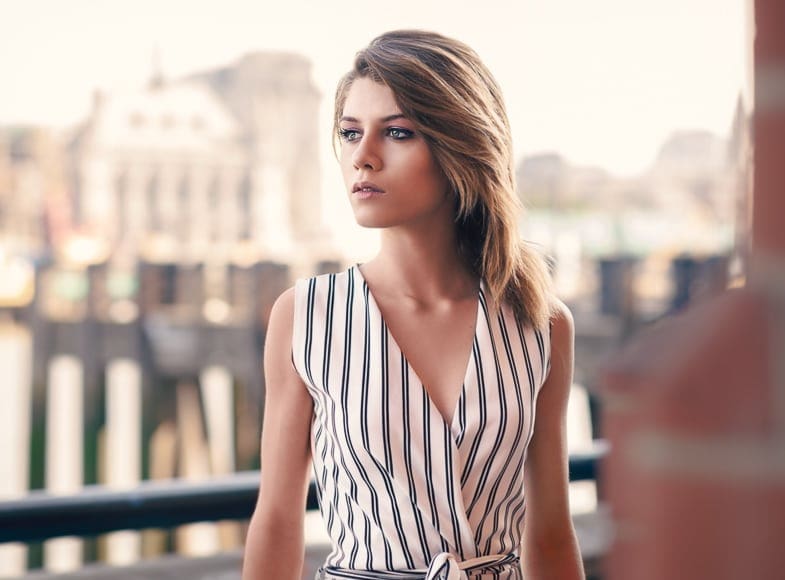







David Smith
Portrait | Last Updated: February 3, 2021
My name is David Smith and I was born and raised in the UK. I shoot a range of genres, however if I had to choose only one, it would be portraiture.
I’ve always been fascinated by cameras and the images they produce. I was probably about 12 when I got my first camera which was used for shooting snaps of my family and pets – they tended to be the point and shoot kind at first, including the old 126 and 110 film cameras with flash cubes.
My first SLR was a Zenit-E, which I loved and slowly moved through various makes and models until the early digital cameras arrived. My last film based SLR was the Canon EOS50e
– I loved that camera. It had an eye-controlled autofocus system which actually worked. Sadly it’s not something they pursued.
I bought a Kodak DC 220 zoom in 1997. I still have the photos and they are pretty awful quality, but it was so convenient to use.
My main pre-occupation for most of this period was to shoot people. Sadly the majority of the women that I knew would run a mile when a camera was turned in their direction, and the men would think I was a bit weird for wanting to photograph them… it wasn’t until mid 2013 that I decided enough was enough and entered a “real” photo studio in Battersea.
Around the time of the studio shoot, I was using a Canon 40D with a Tamron zoom lens
, which was more than enough for me, but of course I felt had to get a “professional camera”, and so I purchased a Canon 5D mark III
.
I used the 5D mark III for a number of years and to be honest, the lenses I used 90% of the time were the Sigma Art 24-105mm f/4.0
in the studio, and for natural light, the Sigma Art 50mm f/1.4
and the Canon 135mm f/2
.
I can remember agonising over zoom lenses and what to use at what focal length, and will I be able to cover every focal length from 20 to 200 (I still see many forum posts on this very subject).
The fact of the matter is, primes are better in every way, and they make you more creative by limiting the options. You can always zoom with your feet.
My current equipment is a Sony A9 fitted with a Meike MK-X1EM
hand grip, which makes the camera much more ergonomic, a Sony FE 55mm f/1.8 ZA Carl Zeiss Sonnar T* , Sony FE 85mm f/1.4 GM
, Sony 35mm f/1.4 G
and my Sigma Art 24-105 f/4.0 DS OS HSM
used with the Sigma MC-11
(Canon to Sony Adapter).
I made the switch to Sony having waited for Canon to get their act together in regards to full frame mirrorless cameras – I can’t wait forever and so made the jump. I’m very pleased with my decision.
I like the quality of Peak Design, and therefore use the Slide-lite strap with anchor links for both the bottom connector and both sides (standard strap locations) for maximum flexibility, and the Peak Design Everyday Backpack 20L
for carrying all my kit.
Lastly, I’ve always got a small tin of Vaseline in my bag as it’s great for giving a bit of shine to the facial cheeks.
For studio work I mostly use a one light setup for portraits, but increase the number of lights for fashion, lingerie etc. I favour a grey backdrop as I like the option to replace the background in Photoshop.
The strobes are Gemini 500 Pro flash heads, not mine but owned by the studio which I rent as required. I utilise various light modifiers, but nearly always have a large 60-inch Octabox somewhere in the line-up.
I obviously try and get as much right as possible “in camera”, but I enjoy the editing process as much as the shooting. I will spend 5 or more hours on each image, usually going back to it over a period of several days in order to tweak something.
I admire the photographers who have a very distinctive style and constantly produce excellent work around that style. I’m not sure that I actually have one (a style that is) – I don’t process my images with a consistent look.
I shoot what I like at that moment in time and I tend to process a photo based on what inspiration strikes on a particular day. My aim is to create an engaging image which makes the viewer look twice.
I believe a photo should have “impact”, otherwise the human brain quickly loses interest, so I endeavor to imbue my images with an interesting composition, or other factor which draws the eye and so keeps the brain engaged.
Obviously, whether I succeed or not is up to the viewer.
www.tmax.photography | @tmaxphotography

Check out these 8 essential tools to help you succeed as a professional photographer.
Includes limited-time discounts.












